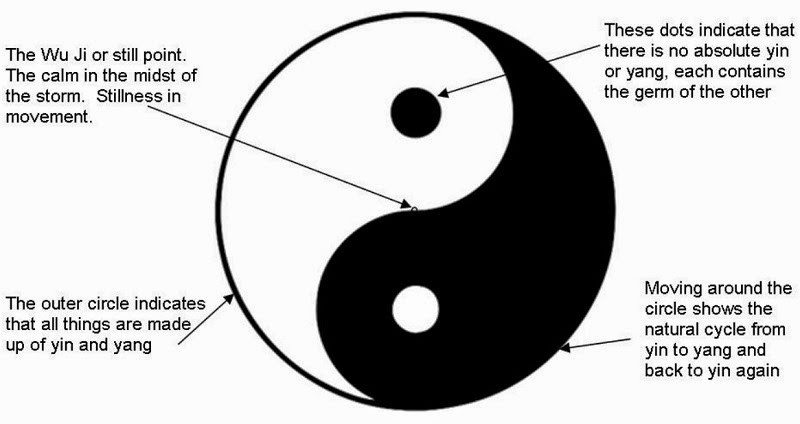
What is a balanced life? The Philosophy of Yin Yang might help
I was thinking about how better to balance my life the other day. I have long been an advocate of the Taoist theory/philosophy of Yin Yang. I first came across it when studying martial arts but back then I thought it was a cool symbol, although I thought i understood the basic principles. It wasn't until I was studying psychology in 1997 that I really got to grips with the meaning of Yin Yang.
I started to strive for balance after reading about Yin Yang. It helped me to know that it isn't about everything being in harmony or equal at all times. Back then, my life was shifting as fast as sand through an hourglass so achieving any sort of balance felt like a constant uphill struggle. But understanding Yin Yang helped me a lot and made me feel more comfortable during more stressful times as I understood that better times would come, I just needed to look for a way to let these better times in.
It taught me that just sitting back and letting events take their own path isn't always the right thing to do. It taught me that life is trying to shape a garden, sometimes I needed to plant, nurture, change, weed or in some cases dig up and start again.
As I've grown older, I appreciate more the lessons of the ever changing ebb and flow of what balance is, from reading about Yin Yang. I thought I would share it with you. I hope in some way it helps you as much as it has me.
Is your life in balance? If not what do you intend to do about it?
Is my life in balance? Not always but I can feel when it isn't and look for what I need to regain some sense of equilibrium.
What is the Yin Yang Theory?
Yin yang theory is a kind of logic, which views things in relation to its whole. The theory is based on two basic components: Yin and Yang, which are neither materials nor energy. They combine in a complementary manner and form a method for explaining relationships between objects.
The outer circle represents 'everything', while the black and white shapes within the circle represent the interaction of two energies, called 'Yin' (black) and 'Yang' (white), which cause everything to happen. They are not completely black or white, just as things in life are not completely black or white, and they cannot exist without each other. Whilst Yin would be dark, passive, downward, cold, contracting, and weak. Yang would be bright, active, upward, hot, expanding, and strong. The shape of the Yin and Yang sections of the symbol, actually gives a sense of the continual movement of these two energies, Yin to Yang and Yang to Yin, causing everything to happen: just as things expand and contract, and temperature changes from hot to cold.
The Origin of the Yin Yang Theory
The original concept of Yin and Yang came from the observation of nature and the environment. 'Yin' originally referred to the shady side of a slope while 'Yang' referred to the sunny side. Later, this thinking was used in understanding other things, which occurred in pairs and had complementary and opposing characteristics in nature.
Some examples include: sky and earth, day and night, water and fire, active and passive, male and female and so on. Working with these ideas, ancient people recognised nearly all things could have Yin and Yang properties. Yin and Yang can describe two relative aspects of the same phenomena such as the example of the slope, or they can describe two different objects like sky and earth.
Neither Yin nor Yang are absolute. Nothing is completely Yin or completely Yang. Each aspect contains the beginning point for the other aspect. For example: day becomes night and then night becomes day. Yin and Yang are interdependent upon each other so that the definition of one requires the definition for the other to be complete. Yin Yang is not static. The nature of Yin and Yang flows and changes with time.
There is much more to Yin Yang but this is I hope, a good starting point for you.

Thank you Alexis Shah.